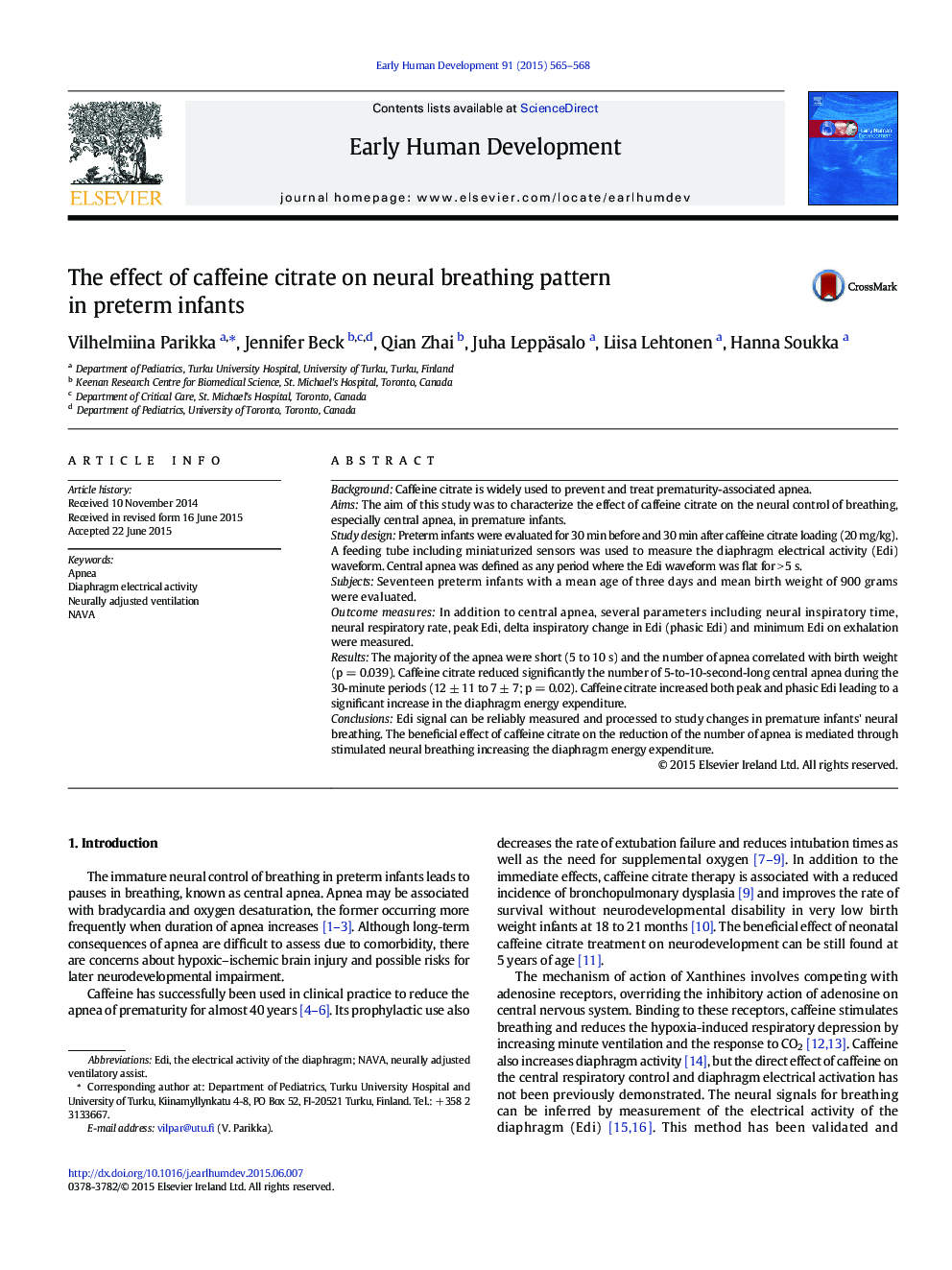| Article ID | Journal | Published Year | Pages | File Type |
|---|---|---|---|---|
| 3917732 | Early Human Development | 2015 | 4 Pages |
•Edi signal can be reliably measured to study premature infants' neural breathing.•Caffeine citrate reduces the number of central apnea in preterm infants.•Caffeine citrate increases peak and phasic electrical activity of the diaphragm.•Diaphragm energy expenditure is increased after caffeine citrate loading.
BackgroundCaffeine citrate is widely used to prevent and treat prematurity-associated apnea.AimsThe aim of this study was to characterize the effect of caffeine citrate on the neural control of breathing, especially central apnea, in premature infants.Study designPreterm infants were evaluated for 30 min before and 30 min after caffeine citrate loading (20 mg/kg). A feeding tube including miniaturized sensors was used to measure the diaphragm electrical activity (Edi) waveform. Central apnea was defined as any period where the Edi waveform was flat for > 5 s.SubjectsSeventeen preterm infants with a mean age of three days and mean birth weight of 900 grams were evaluated.Outcome measuresIn addition to central apnea, several parameters including neural inspiratory time, neural respiratory rate, peak Edi, delta inspiratory change in Edi (phasic Edi) and minimum Edi on exhalation were measured.ResultsThe majority of the apnea were short (5 to 10 s) and the number of apnea correlated with birth weight (p = 0.039). Caffeine citrate reduced significantly the number of 5-to-10-second-long central apnea during the 30-minute periods (12 ± 11 to 7 ± 7; p = 0.02). Caffeine citrate increased both peak and phasic Edi leading to a significant increase in the diaphragm energy expenditure.ConclusionsEdi signal can be reliably measured and processed to study changes in premature infants' neural breathing. The beneficial effect of caffeine citrate on the reduction of the number of apnea is mediated through stimulated neural breathing increasing the diaphragm energy expenditure.
